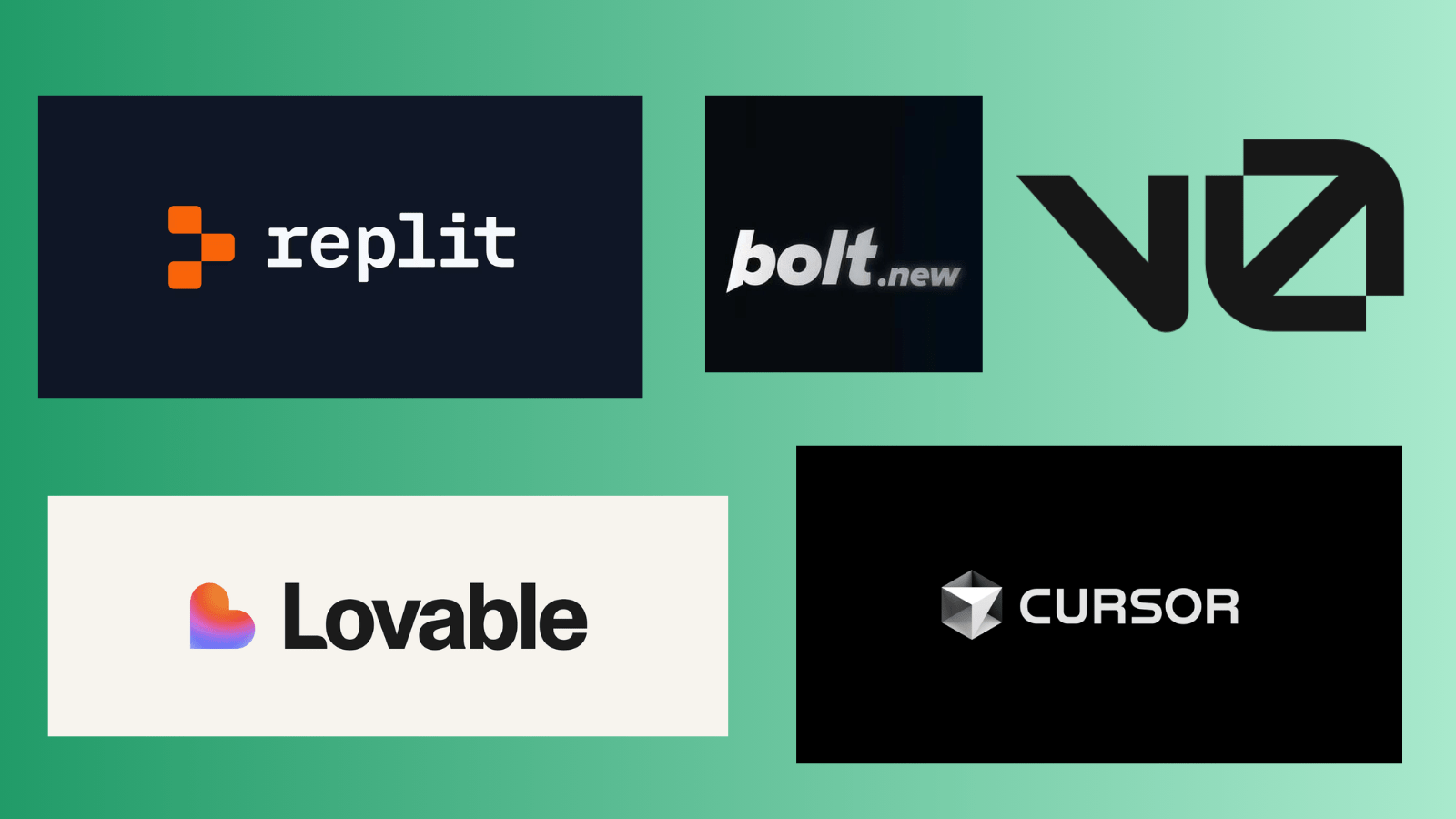Many developers today are embracing a new wave of development tools that go beyond the traditional IDEs.
This article will walk you through the top 5 vibe coding tools in 2025.
Overview
Vibe coding is a modern approach where developers ( and even non-coders) describe what they want in plain English, and AI tools turn those ideas into working code.
It relies heavily on AI tools, particularly Large Language Models (LLMs), to handle technical executions, allowing users to focus more on creativity, logic, and problem-solving rather than manual coding.
Vibe coding tools are AI-powered assistants that let you write code by describing what you want in natural language.
This article covers the top 5 vibe coding tools, their pros, cons, and prices to help you find the right one to boost your productivity and efficiency.
Now, let's look at the reasons developers are turning to Vibe coding tools this year.
Why Developers are Shifting toward Vibe Coding Tools in 2025
Developers are turning to vibe coding tools because they make coding faster, smoother, and less mentally draining.
For overly complex interfaces and workflows, these tools help developers to:
- Reduce mental load and alleviate the burden of remembering every Syntax and libraries.
- Speed up development by auto generating boilerplate, functions, tests, and fixes.
- Improve creativity and focus on logic, design, and user experience instead of low-code.
- Lessen errors and enhance code quality for faster development, better maintainability, and overall reliability.
- Detect bugs and optimise code by leveraging static analysis, real-time debugging, and code refactoring.
Shortly, vibe coding tools simplify the development process by streamlining workflows, automating repetitive tasks, and enhancing collaboration. It helps both developers and non-coders build software faster by focusing on ideas instead of every code line.
Top 5 Vibe Coding Tools to Speed Up Developer Workflows
Replit
This vibe coding tool is the safest place for developers to write, run, and share code instantly right from the browser.
It helps your ideas turn into apps without writing complex code manually.
Whether you have a startup or an established enterprise, Replit empowers you to build and launch apps faster by turning plain ideas into working code.
If you have the vision to craft innovative apps, Replit gives you the tools to turn it into reality.
Pros: You can get an easy set-up, built-in AI and real-time collaboration for development projects.
Cons: You will get limited offline use and have to pay for premium features.
Best for: A beginner, an indie developer, and rapid prototyping.
Bolt
This browser-based tool offers a lightweight and distraction-free coding experience that fosters productivity for developers to create website apps, scripts, and deploy applications quickly and efficiently.
It is popular among the coders for its AI-powered interface, zero setup, and multiple language support.
You can easily focus on flow-state development because of its lightweight UI, better known for its minimal distraction. This shows how vibe coding is bridging the gap between ideation and execution.
Pros: You can generate code quickly to get your project off the ground fast.
Cons: You will get access to limited integration.
Best for: Solo developers who want distraction-free AI-assistant coding.
Lovable
This coding assistant is more user-centric compared to the previous Vibe coding tools because it prioritises building high-quality software and beginner-friendly AI responses. It blends playful UI with powerful AI for a more enjoyable coding experience.
Both non-coders and new developers can use this next-gen coding tool to build apps, software, and websites without extensive knowledge of coding. Now with the upgraded Lovable 2.0, you can turn your dreaming apps into real, functional prototypes without writing a single code.
Pros: You can turn your ideas into code in seconds with this tool's beginner-friendly interface and emotional intelligence.
Cons: If you are an advanced user, then you will get limited customisation.
Best for: Creative coders, beginners who want to explore the future of AI-assisted development.
V0
Now comes this new generative UI tool by Vercel that writes clean, production-ready code for you with just your ideas in plain English. This generative chat interface with in-depth knowledge on modern web technologies can provide you with technical guidance for site designing, web development and more.
You can use v0 for writing and rendering Svelte, Vue, React, and HTML with CSS using blocks. It's built for speed and design-first development to help you launch products quickly.
Pros: You can find it ideal for its AI-powered UI generation, Figma-style design editor, and instant React output.
Cons: You can get this by using only the frontend because it needs some tweaks for backend integration.
Best for: Frontend developers and designers
Cursor
Debugging, context-switching, and boilerplate writing slow down even the best developers today. Cursor addresses these challenges by offering AI-enhanced code editor and frontier intelligence, powered by a fusion of frontier models and rapid prototyping.
The features of this fast and smart AI-powered integrated development environment include a tab to predict your next edit, agent to complete your task quickly, Inline edit to let you edit and write code with AI. If you are a verified university student, you can get one year of free Cursor Pro with access to premium tools.
Pros: You will get an integrated AI assistant for code generation and explanation in a familiar interface with powerful enhancements.
Cons: If you are programming on highly specialised or low-level systems, it may not be ideal for you.
Best for: Solo developers and fast-paced teams
Tips for Choosing the Right Vibe Coding Tool
When you are overwhelmed by too many vibe coding tools and unsure which one truly fits your workflow, choosing the right tool becomes difficult. Consider these key points to help yourself decide wisely:
- Choose a tool that fits with your goals and workflows, whether it is prototyping, UI design, or full-stack app development.
- Look for a strong AI assistant that understands prompts and generates context-aware code.
- Compare pricing tiers and check for good documentation or community support.
Bonus Insight: If you're curious about how big tech is embracing AI across the board, check out Apple's WWDC 2025 Highlights where Apple unveiled major AI advancements that align with the future of vibe coding and natural language development.
Final Thought
As an experienced developer, I have tried several vibe coding tools over the past years and understand that while many promise speed and ease, not all deliver consistent results. Some of the tools truly streamline your workflow and boost your creativity by letting you focus on already solved problems instead of writing boilerplate code, but others make you feel limited or too dependent on prompt quality.
I recommend starting with tools that provide a balance between control and automation. Remember to avoid platforms that sacrifice flexibility or lock the essential features behind steep paywalls.
If you're still holding on to outdated beliefs about development workflows, check out these 10 common programming myths that waste developers’ time.



